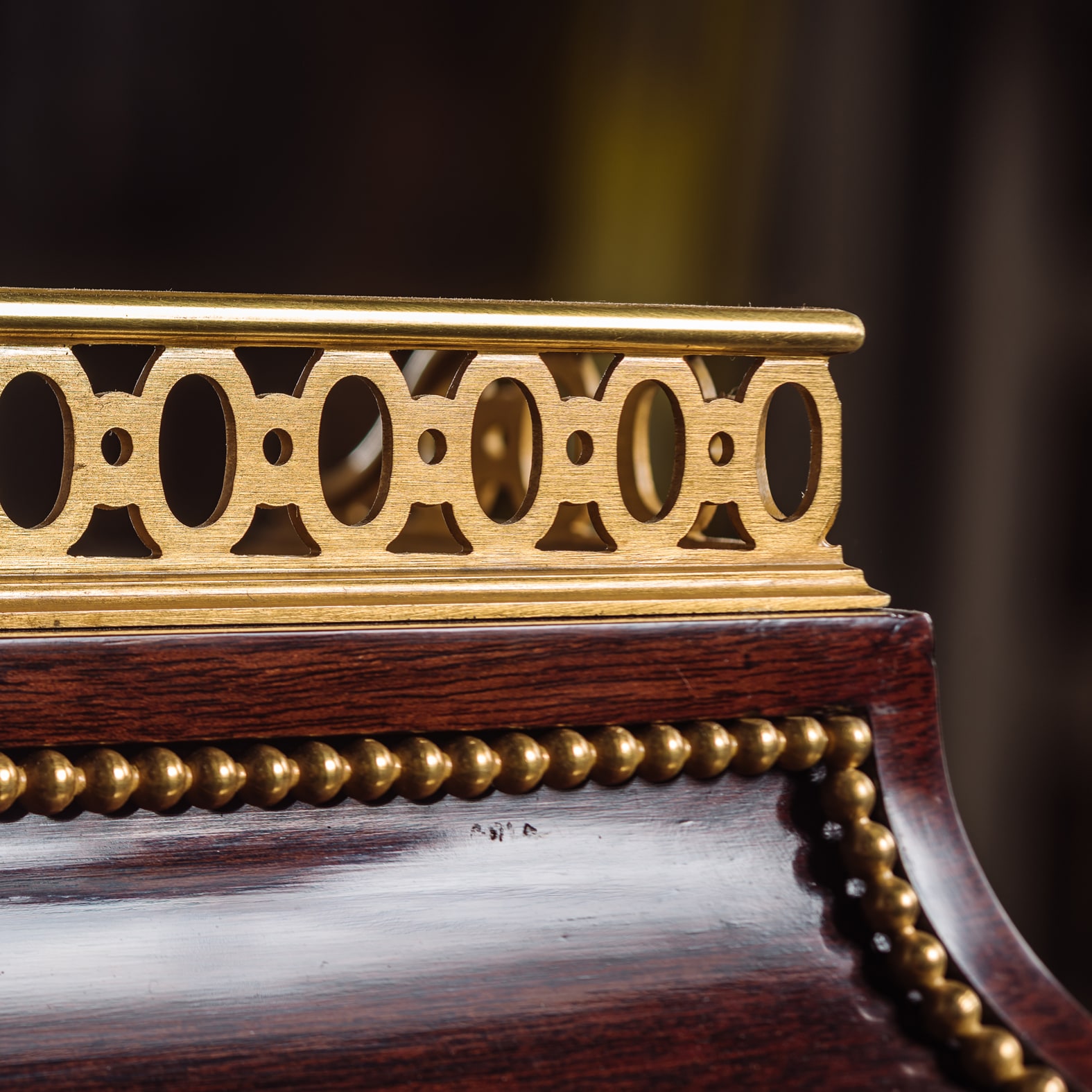بول سورماني
زوج رائع من خزائن الماهوجني البرونزية المذهبة على طراز لويس السادس عشر
£90,000
A Fine Pair of Louis XVI Style Gilt Bronze Mounted Mahogany Cabinets by Paul Sormani. Signed to the lockplates 'P. SORMANI', 10 rue Charlot à Paris'. This...
ابعاد
Height: 167 cm (66 in)Width: 108 cm (43 in)
Depth: 38 cm (15 in)
وصف
A Fine Pair of Louis XVI Style Gilt Bronze Mounted Mahogany Cabinets by Paul Sormani.
Signed to the lockplates ‘P. SORMANI’, 10 rue Charlot à Paris’.
This important pair of cabinets are veneered in a rich flame mahogany with fine gilt-bronze mounts. The cabinets have a part galleried top above a concave frieze and a panel mounted with winding rock roses. Below are four cabinet doors framed by fluted pilaster uprights; the upper doors mounted with gilt-bronze ribbon tied garlands. The cabinets are supported on four toupie feet.
تاريخ
حوالي عام 1870
أصل
فرنسا
متوسط
Mahogany and Gilt-Bronze
توقيع
Signed to the lockplates 'P. SORMANI', 10 rue Charlot à Paris'.
Born in Venice in 1817, Paul Sormani (1817-1877), was a Parisian maker of fine ‘meubles de luxe’. His work was described in the catalogue of the 1867 Exposition Universelle as: ‘toute sa production révèle une qualité d’exécution de tout premier ordre’ (all of his production reveals a quality of execution all of the first order’).
Sormani exhibited at the International Exhibitions in Paris in 1849, 1855, 1867, 1878 and 1900, and in London in 1862, winning numerous medals.
Paul Sormani established the firm in 1847 at 7 Cimetière Saint-Nicolas in Paris, moving in 1854 to 114 rue du Temple, and in 1867 to 10 rue Charlot.
After his death in 1877 Sormani’s son Paul-Charles took over the business that later moved to 134 Boulevard Haussmann.
It can be difficult to date Sormani’s work, as the firm produced furniture for nearly ninety years. However, when Paul Sormani died in 1877, his wife and son took over the business and from this date onwards pieces are normally signed ‘Veuve Sormani & Fils’.
ببليوغرافيا:
مستداغ، كميل وليكولز، بيير. L'Ameublement d'Art français : 1850-1900 ، Les Editions de l'Amateur ، (باريس) ، 2010.
Meyer, Jonathan. Great Exhibitions – London, New York, Paris, Philadelphia, 1851-1900, Antique Collectors’ Club, (Woodbridge, UK), 2006.
Ledoux – Lebard, Denise. Les Ébénistes du XIXe siècle, Les Editions de L’Amateur, (Paris), 1984; pp. 583-588.












 طبع
طبع


